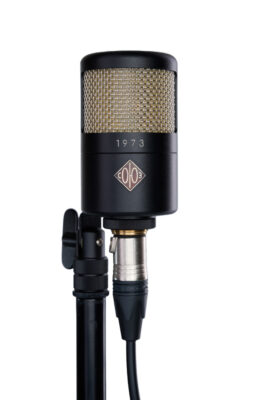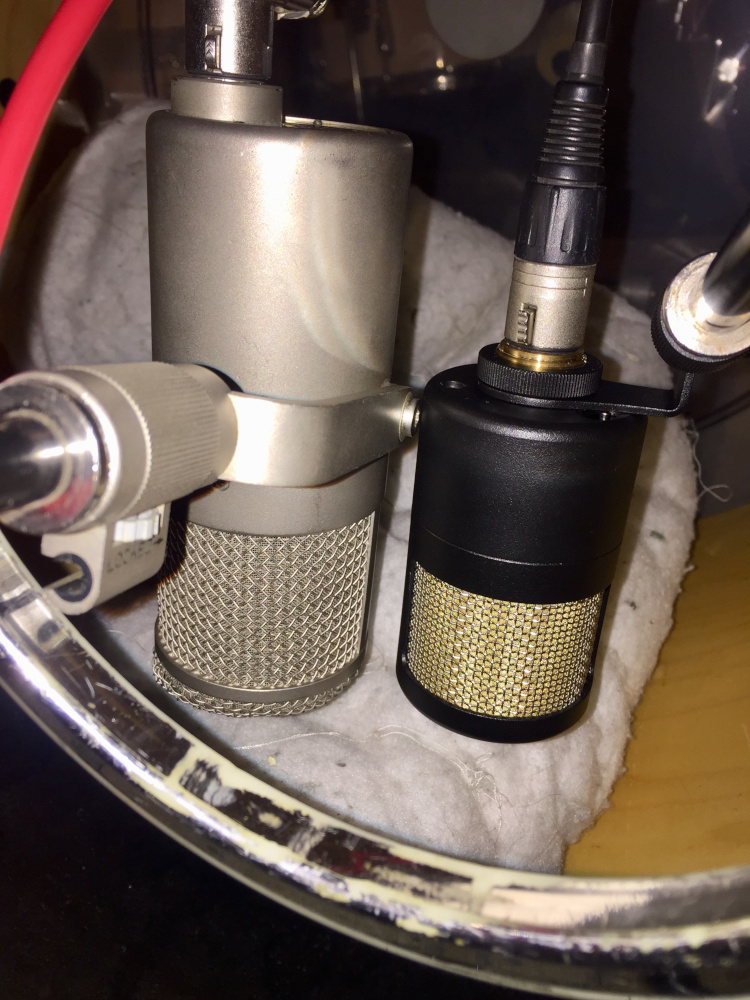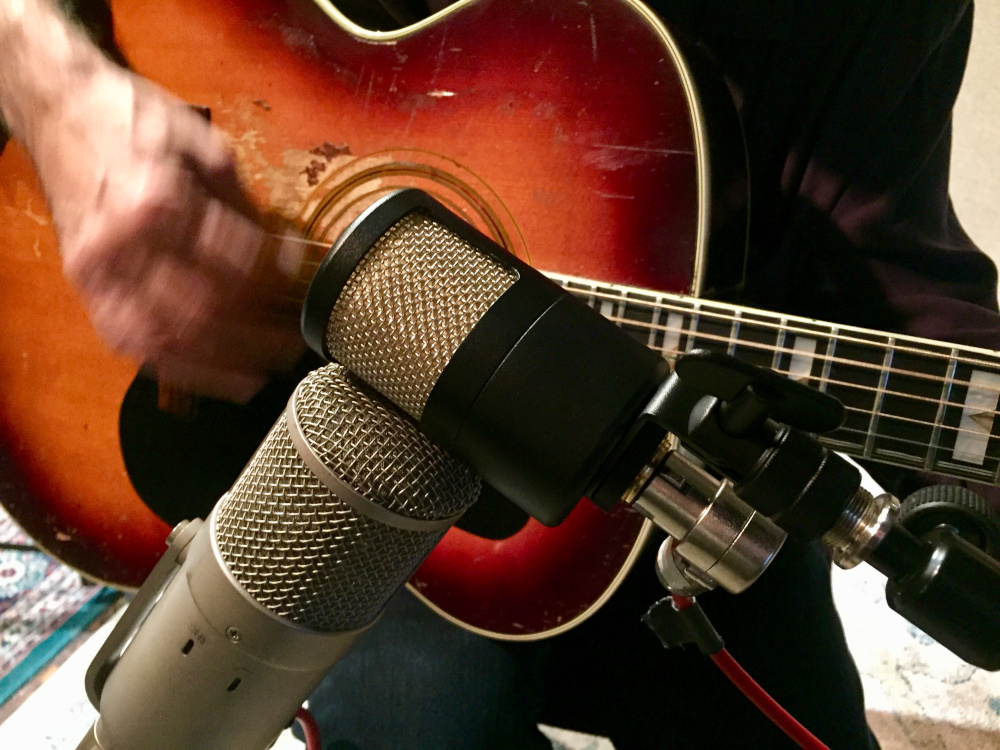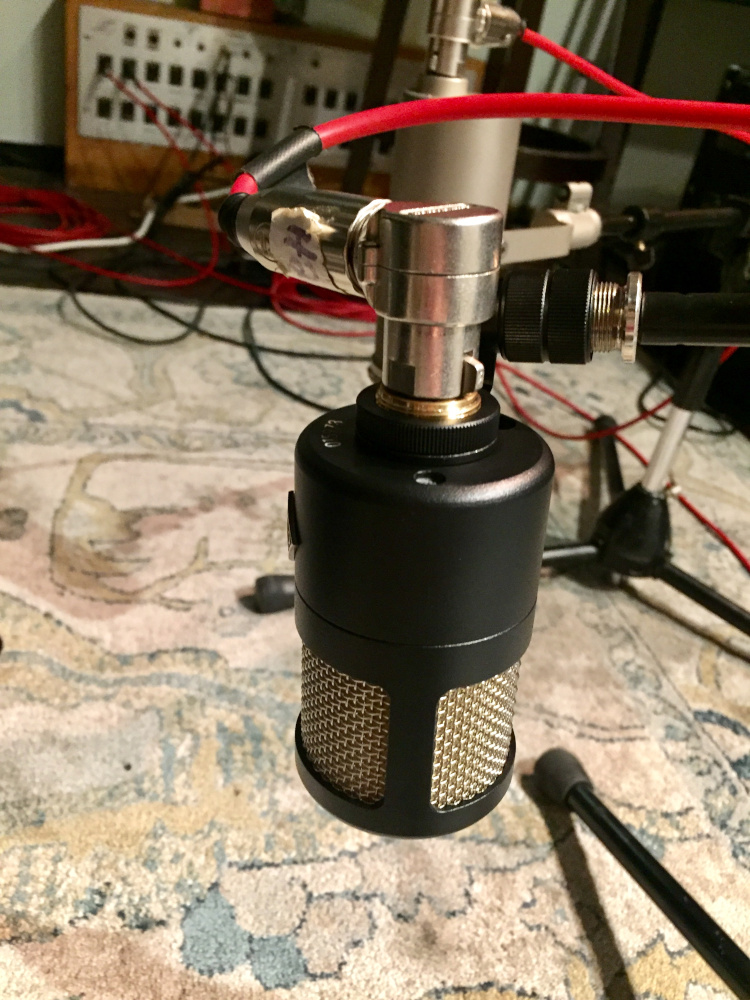Soyuz 1973 Review: FET Large Diaphragm Condenser Microphone in the Studio
In this Soyuz 1973 Review, SonicScoop’s Kallie Marie puts Soyuz’ under-$1000 FET large diaphragm condenser (LDC) microphone to the test.
Soyuz recently released classy matte black and silver versions of their take on a transformerless FET microphone, the 1973. I decided to take the matte black 1973 for a spin, and test it against its predecessor, the classic Neumann U 47 FET.
If you’re unfamiliar with the history of FET (Field-Effect Transistor) microphones, they originally helped replace many of the tube mics of their day — their tendency for low impedance helped popularize them. Who better to design this mic than Soyuz, who specialize in both tube and FET microphone architectures?
Soyuz 1973 Microphone Features:
Some of the main features of the Soyuz 1973 are the smaller housing, which makes it lighter, and more importantly easier to maneuver than its Neumann counterpart for miking in certain applications, like inside a kick drum.
The 1973 features the same capsule as Soyuz’ 023 Bomblet, with the addition of a built in-resonator. The resonator ring mitigates plosives and eliminates unwanted resonance (this was noticeable in action, and we get to that below). When the 1973 was designed by Soyuz, they elected to handcraft the resonator to create an environment for the 023 capsule to be used in the application of this specific microphone. The housing, as always, can shape and change the sound and this was their innovation and unique contribution to this design.
Finally, the 1973 mic has a cardioid polarity pattern, and also has both -10dB and -20dB pads, plus ships with a mic stand attachment. This comes along with some very personal touches like small cards with photos and names of all the people that crafted your microphone.
The 1973 In Use:
I was lucky enough to take the Soyuz 1973 FET for a bit of a shootout, and compare it against a classic Neumann U 47 FET, over at New York City’s Shelter Island Sound, with the help of studio founder Steve Addabbo. (Hey, someone had to sing and play guitar and it wasn’t going to be me!) I tested the mic in some common use case scenarios:
- inside a kick drum
- outside a kick drum
- male singing vocals
- acoustic guitar — both strummed and finger-picked
With a spectral analyzer on each microphone you can see that the curves on both are pretty matched, which was impressive. In general the Soyuz 1973 sounded nearly identical, but with a slightly more forward and pronounced 1 kHz-1500 kHz range, to really make it pop in some applications (which I’ll dig into below) which could save me needing to reach for the EQ in some applications. The aforementioned characteristic is also likely due to the resonator ring built into the Soyuz 1973 FET, which helps eliminate unwanted resonance, which gives it a more focused presence.
The first test was placing both mics outside of a kick drum, with each having a -10dB pad. The U 47 had a round, deep sound with a slight after-ring. Meanwhile the 1973, having similar color, cut through — the best way to say is that the 1973 sounded a little clearer, not brighter.
Inside the kick the classic FET was both warm and round, sounding almost jazz-like in its application, while the 1973 FET had more presence on the attack, and you could really hear it in the 1-1500 kHz range. In this application you need the -20dB pad on, as the Soyuz does tend to run hotter, and I can see why they have added the option for not just -10dB but that additional -20dB.
If I had to choose between the two in this kick application, I would choose the 1973 as it would absolutely save me having to EQ anything. This is, right away, a kick with bite. We did several rounds of blind testing, and were so enthused that we ran and got Mike Mazzota (Providence Music Group), from the adjacent studio room, asking another pair of engineer ears to try this blind test. Still the same conclusion: We’d pick the 1973, and skip needing to EQ.
On a male vocal, no pad was needed for either mic. The classic U 47 FET exhibited slightly more body in the lower mids, while the 1973 was present and crisp. In this instance we didn’t use a pop filter, given the singing style and material, but it’s interesting to note here that the 1973’s built-in resonator ring helps mitigate plosives, saving us that step as well as the potential task of dealing with them later. Of course, use cases would be largely based on singing styles and volumes, but this was a nice bonus to not really have to think about.
On acoustic guitar, again the pad wasn’t needed. The classic FET was warm and rich but had less sparkle on the top end, and less presence. The 1973 was noticeably fuller bodied (It’s wine now?), with highs that are not too bright, they didn’t poke out and were especially pleasant on the fingerpicked playing tests. The 2-4 kHz range has a lot of vibrance and energy in this area, and in a good way — not in a harsh modern way. (I should note I didn’t get to try it on an amped electric guitar, but given the tests I’ve done I can guess that for any fizzy, trebly, distorted guitar, those frequencies already have a tendency to be pronounced, but then that’s what EQ is for.)
All in all the Soyuz 1973 runs hot — I found myself consistently needing to turn the gain down on the input. It makes sense that they’ve added a -20dB pad, as this mic is powerful and responsive.
To Be Critical:
Its hard to be critical of something so astonishingly good sounding.
My criticisms would be ergonomic. When I was setting the 1973 up as a kick drum mic I found that the XLR placement makes the use of a right angle XLR cable a bit awkward in this application, and potentially in others.
Adjusting the direction/placement of the XLR orientation would benefit the mic. For example, when I tried to put the right angle XLR cable on so that I could easily fit it inside the kick drum, it was not aligned in a way that it could be used with that. So I had to change the cable in the end, to the traditional kind, which changed the footprint of the microphone. (Thank goodness it’s half the size of its predecessor!) Later still, I went back to the right angle cable in another use case, and when I needed to check or change the pad, the right angle cable blocks the pad switch, but I was able to kind of get in there with a pencil.
The only other criticism I could leverage at this mic, isn’t even the mic itself. The case that the mic comes in is a cardboard box, which is, to be fair, nicely designed, and comes with a foam housing, so it is indeed safe enough for shipping and transport. I kind of longed for a box with a bit more longevity, but honestly it’s fine.
I can understand the cardboard box because it keeps the cost down, which I don’t think I am alone in appreciating. This great mic is available for the competitive price of $799. A different case would have run the cost up. Over time I can invest in a replacement case, as the box and foam are likely to deteriorate in time, but it’s worth the investment — and that’s a Future Kallie problem!
Summing Up:
Soyuz has captured something classic that’s well respected for a good reason, and given it a slightly, not over pronounced, modern twist. You could say they’ve improved an already good thing.
For $799 the 1973 is a steal, and I also suspect it will save people a lot of EQing depending on the style of music you’re working in. It’s always great to be able to get a great sound at the source, which is how it should be. Also, according to Soyuz no other microphone in this price range is completely handmade including the capsule, which will add to the appeal for many.
I’m officially a fan of this mic, and if you’ve always dreamt of owning a classic FET 47, but haven’t been able to get your hands on one, reach for the 1973 instead. You’ll have all the desired qualities, in a smaller more affordable design, with a slightly different and — in my opinion — better presence in a range of frequencies that make it indispensable on kick drums, guitars, and vocals.
— Kallie Marie is a contributor to SonicScoop.com. She is the author of “Conversations with Women in Music Production“, available now from Backbeat Books.
Please note: When you buy products through links on this page, we may earn an affiliate commission.











[…] Source link […]